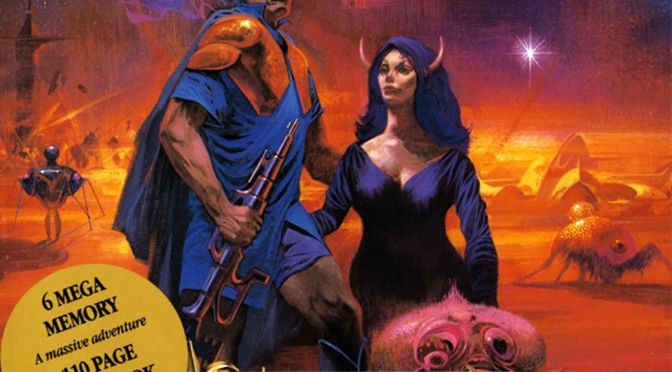
If you’ve read a few of my reviews, you know I often mention my backlog. I’ve made a concerted effort to work through the treasure trove of games I own or have always wanted to play the last few years, and it’s been a fulfilling process.
It wasn’t too long ago that I completed Phantasy Star, many years after first playing it. Thanks to a number of enhancements that allowed the player to determine how much they valued their time, the SEGA AGES release of Phantasy Star proved to be an enjoyable way to finally roll credits. Well naturally, that set me up to play Phantasy Star II.
Debuting on the Mega Drive in Japan in March 1989, a little more than a year after its predecessor, it was the first RPG on Sega’s new home console. It took another year to reach American shores, but when it released in March 1990 it was still the first RPG on the platform, and one of a growing number of turn-based JRPGs to reach the market (Dragon Quest came out in August 1989 for instance, and Final Fantasy was still a few months away).
Phantasy Star II received effusive praise when it launched, with its epic size and scope lauded. At a time when so many games could be beaten in an afternoon, the dozens of hours it’d take to beat this one offered a stark contrast, and serious bang for the buck! And it wasn’t a walk in the park, either. Copies of the game initially included a world map and 110-page hint book that was just a full-on walkthrough.

In my experience, such a guide is all but required eventually. In the dozen hours I played, dungeons were confusing labyrinths of teleporters, annoyingly obscured by ceiling pipes, and riddled with a punishing random battle encounter rate. And I didn’t even make it to the tougher dungeons that implemented damaging tiles or emphasized falling from one floor to the next!
For this span of time, I refrained from referencing the hint book as much as possible. After all, venturing into the unknown and independently conquering a dungeon can be immensely satisfying! As implemented here though, I just found the dungeon design to be a hassle. The blind navigation (no minimap, for instance) and reliance on teleporters (think Silph Co. in the original Pokémon games) stressed me out as I tried to keep up with where I had and hadn’t been yet.

Random battles bogged down exploration, and could quickly end my time in a dungeon. There was an impressive variety of enemies from one dungeon to the next (including the requisite reskinned enemies), and the pool of enemies often varied in strength. Some groups were pushovers; others could wipe my four-person party in a couple turns. I played the version of Phantasy Star II included in Sega Genesis Classics on the Switch and towards the end, used the compilation’s rewind feature to avoid tough battles. With many simple animations, battles were slow and similarly benefited from the compilation’s fast-forward feature.
As far as I could tell, there wasn’t much depth to combat, I just needed to outspeed and overpower my foes. Instead of targeting specific enemies, the party members targeted enemy groups, which threw me off initially. There was a system of magic, or techniques in this game’s sci-fi parlance but I really only ever used healing or teleporting spells. I just brute forced my way through battles, healed when needed, and teleported back to town when MP was almost depleted.

Grinding in this way (for levels, or meseta to buy the next best piece of gear) offered a Zenlike reprieve since exploration wasn’t doing it for me. But, healing highlighted the game’s archaic menu navigation; that is it took a half-dozen button presses to heal, the menus collapsed, and then I’d have to run though the button presses again another couple of times. After multiple hours of this, I could heal my party blindfolded.
From what I’ve read, the game’s story plays out in a surprising way, and researching it for this review made me rethink calling it quits. It’s little more than a framework, with basic guidance at the start and single-sentence conversations with NPCs filling in context and direction, but if anything, the sci-fi setting appealed to me in a big way. Character designs were obviously inspired by 1980s anime and hair metal bands, which I probably would’ve eaten up when this game out.

Honestly, had I been a teenager when Phantasy Star II launched, I’d have been all about it. Whereas now I look at the game and find its lack of amenities a turn-off, I probably would’ve been thrilled to explore dungeons for hours on end with the hint book beside me, watching the party get stronger with each battle. I’d love to see it receive the same SEGA AGES treatment its forbearer received but short of that happening, my time with Phantasy Star II has come to an end. That said, I’ll probably come back to it in the future without a dismissive approach to using the hint book, and enjoy it all the same.
